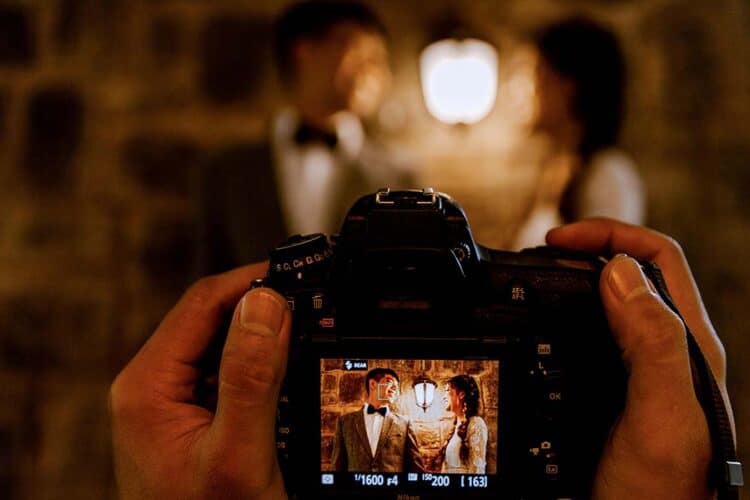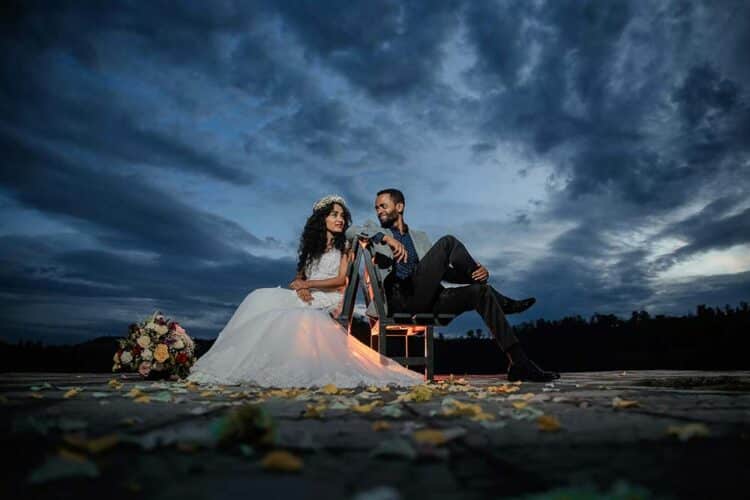Destination Wedding Photography: 10 Must-Know Tips for 2025
Destination weddings are magical, but photographing them takes serious preparation and heart. It takes real planning to get it right between travel, timelines, and tough lighting. As a photographer, you can’t afford to miss key moments at all.
That’s why we’ve pulled together the best destination wedding photography tips for 2025. These insights will help you stay organized, creative, and fully ready to deliver stunning photos, no matter the weather, location, or couple’s vision. Let’s dive into the essentials.

1. Know Your Location Inside Out
Before you pack your bag, spend time studying your wedding destination. Learn the local weather, golden hour timing, and any rules about photography permits or drones. The more you know upfront, the smoother your experience will be on the day.
For instance, scout digital maps or previous wedding galleries for angles and background options. Try platforms like Breezit to find venues surrounded by nature with real-time availability and pricing. It’s perfect for stress-free planning and beautiful scenery in every shot.
When you understand the location, you anticipate problems before they arise. You’ll also know where to set up, when to shoot, and how to adapt. Remember, clients love that kind of confidence since it shows in every image you capture.
2. Master Your Gear Game
Traveling light is key, but never at the expense of essential gear. So, bring your favorite camera body, plus a backup and prime lenses that suit outdoor and indoor settings. Always pack extra batteries, memory cards, and chargers for every device.
As a photographer, your destination wedding photography gear should include a portable light source and weatherproof storage. You never know when you’ll need quick backups. This is vital, especially in windy, rainy, or sandy environments where conditions change fast and often.
All in all, choose gear that works in multiple lighting conditions, mainly fast glass for low light. Also, invest in a compact tripod, lightweight reflectors, and solid camera straps. Simply put, when carrying gear for 12 hours or more on location, comfort matters.
3. Create a Destination Wedding Checklist
Preparation often begins before you even pack your bags. Thus, start by building a checklist that includes equipment, travel documents, contracts, and any cultural requirements. This ensures you won’t leave behind anything important or delay your timeline once on-site.
A strong destination wedding photography checklist also includes items like sunscreen, lens clothes, and water. Keep backups of contracts and shot lists both digitally and on paper. The goal here is to ensure you’re always ready for anything the day might throw at you.
Note that a wedding checklist keeps your mind clear and your energy focused on creativity. There’s nothing more reassuring than knowing everything is in place. Besides, it frees you to stay present and responsive, especially when moments are fleeting, and the timing is tight.
4. Communicate Expectations Clearly
Clear communication creates trust and avoids stress for both you and your couple. Thus, schedule a video call to walk through how to prepare for a destination wedding shoot. Talk about travel plans, photos they love, and what to expect.
It’s also important to set boundaries in your destination wedding photography contracts to include travel coverage, fees, meals, and lodging. Always be transparent and firm so there’s no confusion later on. Just know that a clear agreement protects your time and your reputation.
Once expectations are clear, couples will feel relaxed and confident in the process. That trust allows for better collaboration, smoother sessions, and more natural photographs. It’s often better to over-communicate than leave things unclear.
5. Plan Around Natural Light
Great photos start with better lighting, so timing is everything on a wedding day. Research sunset times and golden hours in advance to prepare for the magic. Still, be mindful of changing light conditions, which vary by location and time of year.
Use these destination wedding lighting tips to schedule portraits before midday or at sunset. For instance, soft, directional lighting can create stunning skin tones and romantic shadows. While harsh light ruins photos, good planning makes your job easier and more efficient.
Hence, know where light hits each part of the venue at different times of day. Consider how shadows shift during the ceremony and how reflections might affect indoor shots. When you work with light, not against it, your images will glow with life.

6. Pack Smart for Travel
Let’s be honest; most airlines don’t treat camera gear kindly, so pack wisely. Bring your most valuable photography gear in a carry-on bag with plenty of protection. For utmost safety, use TSA-approved locks and keep batteries in a separate pouch, clearly labeled and fully charged.
Plus, don’t forget creature comforts that help you stay focused. These travel tips for wedding photographers include bringing power banks, snacks, and weather-appropriate clothes. When your bag’s packed right, you save energy, stay sharp, and even shoot hassle-free.
But that’s not all. Be sure to carry backups in your luggage in case of delays or baggage issues. As a general rule, label everything and use a checklist before every return trip. It may seem small, but a lost charger can disrupt an entire timeline if you’re far from a camera store.
7. Prepare for On-Location Challenges
New and unfamiliar spots can throw in a few surprises. You might face weather delays, last-minute venue changes, or travel hiccups. Arriving at least a full day early gives you breathing room to scout, adjust, and relax before the big day starts.
Handling destination wedding photography challenges means staying flexible, focused, and calm under pressure. Remember, your energy sets the tone for how your couples feel. So, when you’re adaptable and confident, they will feel safe and trust you.
Expect the unexpected and treat each challenge like part of the story. Suppose it rains; you can turn it into a romantic backdrop. Alternatively, tight spaces may inspire creative framing. Basically, when you stay open, you often create some of your best work in surprising moments.
8. Make Space for Creative Shots
While shot lists keep things orderly, creativity can happen in between the scheduled moments. So, take some time to explore the venue or capture candid shots. Those little moments and real smiles often become the couple’s favorite memories.
Study destination wedding photo ideas as a start to spark your imagination. As you explore, notice the local architecture, natural frames, or chances to play with movement. Fresh settings can unlock creative possibilities you didn’t know you had.
The intent is to build time into your schedule for fun, relaxed moments with the couple. Explore the space together by asking them to take a walk, dance, or hold hands naturally. Those unscripted interactions often lead to the most heartfelt and lasting images.
9. Inspire Confidence Through Your Vision
Destination weddings can feel emotional and a little hectic for couples. That’s where your calm, confident guidance really makes a difference. Share gentle posing tips, keep an eye on timing, and tune in to their emotions.
Look for destination wedding photography inspiration in past shoots, creative blogs, or even venue photos on Breezit. Even if you’re a pro, notice how others capture wide views or close, quiet moments. This can spark new ideas and help you tell a unique story.
You can use humor, empathy, and patience to anchor them and help ease the tension. These small efforts will go a long way, keeping everyone grounded and more natural. You get more genuine reactions and better storytelling images with a totally relaxed couple.

10. Price Honestly and Professionally
Pricing destination weddings fairly is key to protecting your time and energy. As such, break down every fee clearly, including travel, editing time, second shooter costs, and place to stay. Clients usually value honesty when they see exactly what each part covers.
When setting your destination wedding photography pricing, factor in buffer costs for delays or extra time. Don’t overcharge just to land the gig; it rarely pays off. You deserve fair pay for your time, gear, and all the skill you bring, especially in high-pressure travel shoots.
Additionally, provide clear pricing packages with optional add-ons like prints or extra coverage. It’s obvious that being upfront builds trust and helps avoid last-minute surprises. Couples will also feel respected and confident when your pricing shows value and care from the start.
Nail the Shot: Destination Wedding Photography Tips
Shooting a wedding in a new place is exciting yet challenging. Still, with the right mindset and prep, you can stay focused. That clear view will help you capture real moments that beautifully reflect the couple’s love.
These destination wedding photography tips are all about helping you work smarter, not harder. From lighting to packing and communication, each detail matters. Mastering them alone brings you closer to a smoother, more joyful experience on the big day.
Breezit makes finding wedding venues easier than ever. Their real-time pricing, clear availability, and quick replies mean no inbox overload. If you’re planning a California shoot, it’s a smart tool worth exploring from day one.
Want more ideas and locations to inspire your next shoot? Explore more venues in Orange County through Breezit’s trusted directory. You’ll find gorgeous spots, helpful planning tools, and everything you need, all in one place.
EXPLORE SOMEWHERE NEW
Nothing found.
BUY A PRINT
All photos on this site are available as limited edition fine art photographic prints. Please get in touch for sizes and rates.

